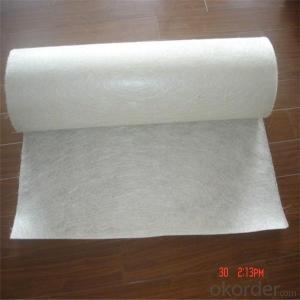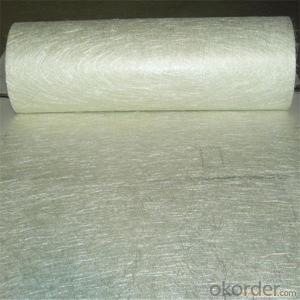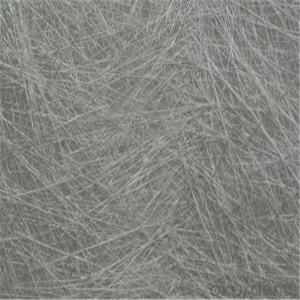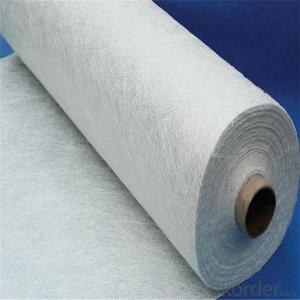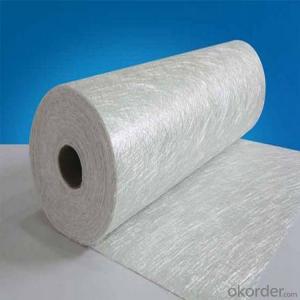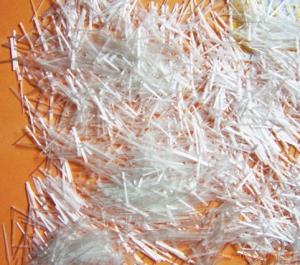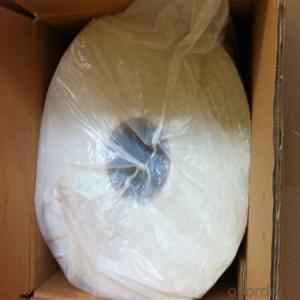E-glass chopped stand mat, woven fiberglass cloth
- Loading Port:
- Tianjin
- Payment Terms:
- TT OR LC
- Min Order Qty:
- 100 m.t.
- Supply Capability:
- 10000 m.t./month
OKorder Service Pledge
OKorder Financial Service
You Might Also Like
Quick Details
| Technique: | Chopped Strand Fiberglass Mat (CSM) | Dimensions: | 80g - 900g | Mat Type: | Continuous Filament Mat |
| Fiberglass Type: | E-Glass | Softness: | soft, very soft | Place of Origin: | Shandong, China (Mainland) |
| Brand Name: | cnbm | Model Number: | CSM | material: | fiberglass |
| Glass type: | E glass / C glass | Bond type: | powder or emulsion | Roll width: | 200 - 2600mm |
| Roll weight: | 28 - 55kgs | Density: | 225g/m2, 300g/m2, 450g/m2 | Certification: | ISO, CE |
Packaging & Delivery
| Packaging Details: | standand export packing . or packed as customer's need |
| Delivery Detail: | 10-20days after the contract is effective |
Specifications
Fiberglass Chopped Strand Mat
1.good combination fo resin
2.easy operation
3.good wet strength retention
Specification:
Fiberglass Chopped Strand Mat is an non-woven E- or C-glass fiberglass fabric manufactured by spreading continuous filament rovings of 50mm in length randomly and uniformly in combination with polyester binder in power form (or other binder in emulsion form). Powder or Emulsion fiberglass fiber chopped glass mat

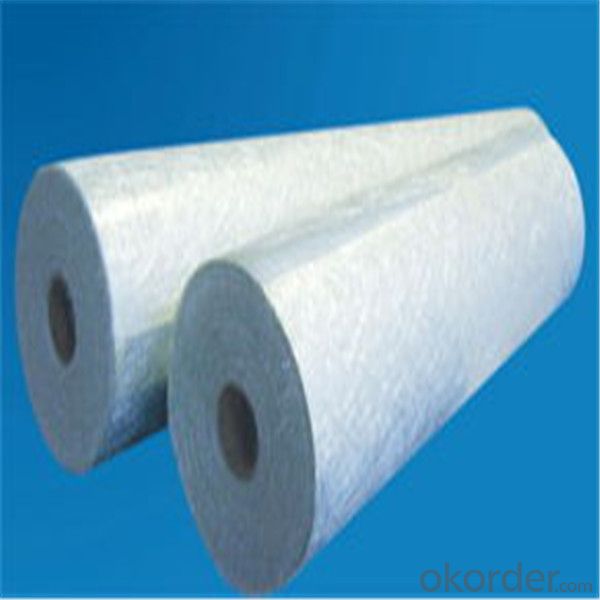
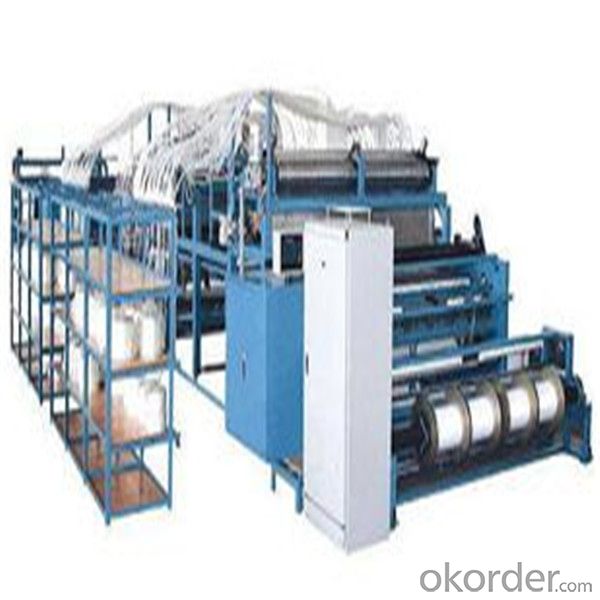
- Q:Is fiberglass chopped strand suitable for thermal insulation?
- Yes, fiberglass chopped strand is suitable for thermal insulation. It is commonly used in construction and manufacturing to provide effective insulation against heat transfer, helping to maintain desired temperatures and reduce energy consumption.
- Q:What are the acoustic insulation properties of fiberglass chopped strand?
- Due to its unique composition and structure, fiberglass chopped strand possesses exceptional acoustic insulation properties. Comprised of fine glass fibers that are randomly arranged and bound together with a resin or binder, the chopped strands form a dense and fibrous structure that effectively absorbs sound waves. The main way in which fiberglass chopped strand provides acoustic insulation is by diminishing sound transmission. When sound waves collide with the surface of the fiberglass, they are converted into mechanical vibrations, which are then absorbed and dispersed within the fibrous structure. Through this absorption process, the material significantly reduces the amount of sound that passes through it, resulting in a quieter environment. Moreover, the dense and fibrous nature of fiberglass chopped strand helps to dampen and lessen sound. The numerous air pockets and interlocking fibers within the material create a high level of internal friction, which effectively dissipates sound energy. This not only reduces the intensity of sound but also helps to prevent the transmission of vibrations and resonance. Furthermore, fiberglass chopped strand is renowned for its outstanding thermal insulation properties, which indirectly contribute to acoustic insulation. The material's ability to resist heat transfer helps maintain a consistent temperature, thereby reducing the occurrence of sound-reflecting surfaces and minimizing the amplification of noise. In conclusion, fiberglass chopped strand is an exceptionally efficient material for acoustic insulation. Its dense and fibrous structure, combined with its capacity to absorb, dampen, and attenuate sound waves, make it an ideal choice for applications requiring noise reduction and control, such as in construction, automotive, and industrial settings.
- Q:Is fiberglass chopped strand compatible with vinyl ester resin?
- Yes, fiberglass chopped strand is compatible with vinyl ester resin.
- Q:How does the fiber alignment of fiberglass chopped strand affect the strength of composites?
- The fiber alignment of fiberglass chopped strand plays a crucial role in determining the strength of composites. When the fibers are randomly oriented, they provide strength in multiple directions, making the composite more isotropic. In contrast, if the fibers are aligned in a specific direction, the composite becomes anisotropic, with enhanced strength along the fiber orientation. Therefore, the fiber alignment directly influences the mechanical properties and overall strength of the composite material.
- Q:How does the surface treatment of the chopped strand affect its performance?
- The surface treatment of the chopped strand can significantly affect its performance. The treatment helps improve the adhesion between the strand and the resin matrix, resulting in enhanced mechanical properties and overall strength of the composite material. It also helps reduce fiber breakage during processing and improves the strand's wet-out characteristics, leading to better fiber dispersion and resin impregnation. Additionally, the surface treatment can enhance the strand's resistance to moisture, chemicals, and environmental degradation, thereby improving its durability and long-term performance.
- Q:Can fiberglass chopped strand be used in the production of aerospace interiors?
- Yes, fiberglass chopped strand can be used in the production of aerospace interiors. Fiberglass is a versatile and lightweight material that offers excellent strength-to-weight ratio, making it suitable for various applications in the aerospace industry. Chopped strand fiberglass can be used to reinforce composite materials used in the production of aircraft interiors, such as bulkheads, cabin panels, ceiling panels, and other structural components. It provides enhanced durability and stiffness to ensure the structural integrity of the interior components while maintaining a lightweight design. Additionally, fiberglass chopped strand can also be used for insulation purposes in aerospace interiors, providing thermal and acoustic properties. Overall, fiberglass chopped strand offers numerous advantages that make it a suitable material for the production of aerospace interiors.
- Q:What are the main factors affecting the mechanical properties of fiberglass chopped strand?
- The main factors affecting the mechanical properties of fiberglass chopped strand include the type and quality of the glass used, the length and diameter of the fibers, the distribution and alignment of the fibers within the matrix, the resin used to bind the fibers, the curing process, and any additives or treatments applied to the fibers.
- Q:How does the fiber orientation of fiberglass chopped strand affect its performance?
- The fiber orientation of fiberglass chopped strand significantly impacts its performance. The orientation refers to the alignment of the individual fibers within the strand. Depending on the intended use and desired properties, the fiber orientation can be optimized to enhance specific characteristics. Firstly, the fiber orientation affects the mechanical strength of the fiberglass. When the fibers are aligned parallel to the applied load, they can efficiently transfer the stress, resulting in increased tensile and flexural strength. This makes the material more resistant to breakage and deformation, ideal for applications requiring high structural integrity. Secondly, the fiber orientation influences the stiffness and rigidity of the fiberglass. Fibers aligned in the direction of the load offer greater resistance to bending, making the material stiffer and able to withstand higher forces without excessive deflection. This is crucial in applications where dimensional stability and resistance to deformation are important, such as in construction or automotive industries. Moreover, the fiber orientation impacts the impact resistance of fiberglass. By aligning the fibers in multiple directions, the material can distribute the applied force more evenly, dissipating the energy and reducing the likelihood of cracking or fracturing. This makes it more suitable for applications requiring impact resistance, like protective gear or transportation components. Additionally, the fiber orientation affects the thermal and electrical conductivity of fiberglass. Depending on the desired property, fibers can be aligned to enhance or minimize heat or electrical transfer. For instance, aligning fibers perpendicular to the heat flow can improve insulation properties, while aligning them parallel to electrical current flow can enhance conductivity. In summary, the fiber orientation of fiberglass chopped strand plays a crucial role in determining its performance characteristics. By optimizing the alignment, the material's strength, stiffness, impact resistance, and thermal/electrical conductivity can be tailored to meet the specific requirements of various applications.
- Q:Can fiberglass chopped strand be used for sound insulation?
- Yes, fiberglass chopped strand can be used for sound insulation. The irregular fibers of fiberglass help to absorb sound waves, reducing noise transmission and improving acoustics in various applications.
- Q:How does the length of chopped strand affect its performance?
- The performance of chopped strand can be significantly influenced by its length. Chopped strand refers to the use of short lengths of fiberglass or other reinforcing fibers in composites, typically to enhance strength and stiffness. Various key properties of the composite material are affected by the length of chopped strand. First and foremost, longer strands generally yield higher tensile strength. This is because longer strands offer a greater continuous fiber reinforcement throughout the composite, resulting in improved load-bearing capabilities. On the contrary, shorter strands may struggle to distribute stress effectively, leading to lower strength. Furthermore, the stiffness of the composite is impacted by the length of chopped strand. Longer strands provide greater resistance to deformation, resulting in a stiffer material. This can be advantageous in applications that prioritize rigidity, such as structural components. Conversely, shorter strands may contribute to a more flexible composite, which can be beneficial in applications requiring impact resistance or flexibility. Additionally, the processability of the composite material is influenced by the length of chopped strand. Generally, shorter strands are easier to mix and distribute evenly throughout the matrix, thereby improving the overall homogeneity of the composite. On the other hand, longer strands may necessitate more attention during processing to ensure proper dispersion and alignment. To summarize, the length of chopped strand directly affects the performance of composites. Longer strands generally offer higher tensile strength and stiffness, while shorter strands can enhance processability and flexibility. The selection of the appropriate chopped strand length depends on the specific requirements of the application, considering factors such as strength, stiffness, processability, and desired physical properties.
1. Manufacturer Overview |
|
|---|---|
| Location | |
| Year Established | |
| Annual Output Value | |
| Main Markets | |
| Company Certifications | |
2. Manufacturer Certificates |
|
|---|---|
| a) Certification Name | |
| Range | |
| Reference | |
| Validity Period | |
3. Manufacturer Capability |
|
|---|---|
| a)Trade Capacity | |
| Nearest Port | |
| Export Percentage | |
| No.of Employees in Trade Department | |
| Language Spoken: | |
| b)Factory Information | |
| Factory Size: | |
| No. of Production Lines | |
| Contract Manufacturing | |
| Product Price Range | |
Send your message to us
E-glass chopped stand mat, woven fiberglass cloth
- Loading Port:
- Tianjin
- Payment Terms:
- TT OR LC
- Min Order Qty:
- 100 m.t.
- Supply Capability:
- 10000 m.t./month
OKorder Service Pledge
OKorder Financial Service
Similar products
New products
Hot products
Related keywords
